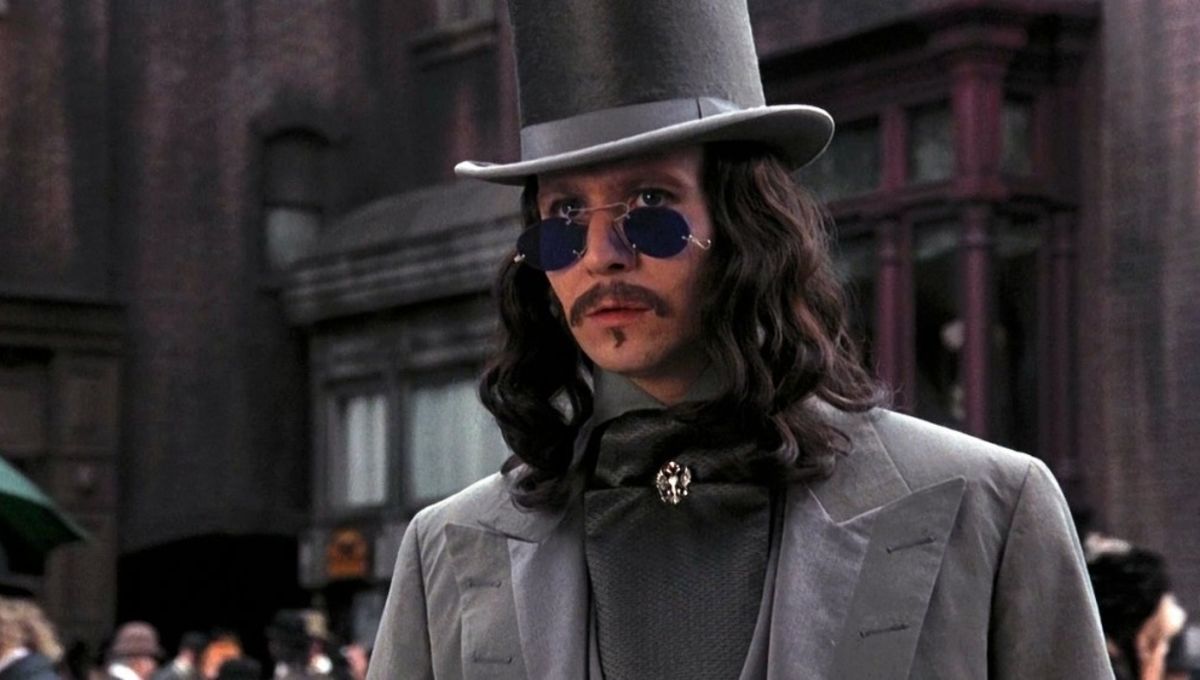
Gary Oldman has been acting since the late 1970s and has a longstanding record of noteworthy performances and highly successful films. And while he is known for his versatility in playing a diverse range of character types, he is often given antagonist roles due to his unique, quirky and extremely humanizing approach to movie villains. Oldman villains are memorable for a number of reasons, but one of the most salient is his ability to shift naturally from subtle expressions to over-the-top theatricality, emphasizing depth and complexity over the familiar, but still giving audiences something to believe in, whether or not they identify with his character’s motives or behaviors.
Whether a pimp, a terrorist or the devil himself, Oldman’s bad guys come across as both outrageous and believable, characters with personalities that you may not have come across in your own life, but having seen them on the screen, you can imagine they exist. That, at its best, is what acting does; it makes the unbelievable believable. And Oldman, like other masters of the craft, gives his audiences an experience that lives on in their imaginations, both collectively and individually.
The following list includes some of Gary Oldman’s finest roles to date, and it also shows just how indiscriminate his abilities are, even within the confining terms of a villain archetype. Every role on this list is uniquely his own, and each of these portrayals has been studied, applauded and celebrated as a truly human depiction, even when, as in the case of Count Dracula, the character may not be human at all. While the role of the villain has changed in the last century, a lot of that change has been driven by actors like Oldman who have reinterpreted the archetypes with a modern, or perhaps postmodern, sensibility. As a result, expectations may have changed for antagonist roles, but performances are far more memorable, nuanced and pleasurable for the viewers.
1. JFK (1991)
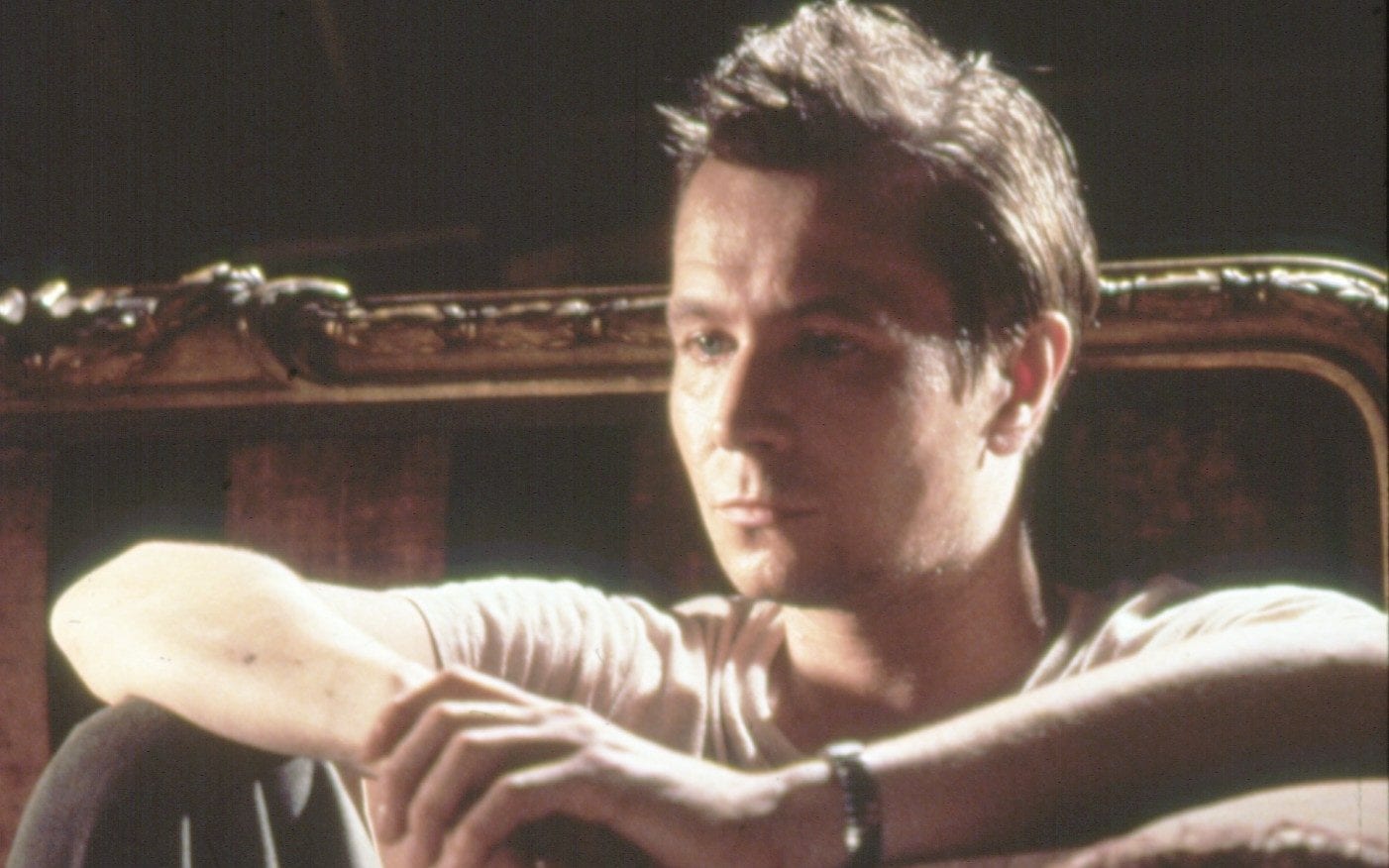
While Lee Harvey Oswald may not be a classic movie villain, he is certainly a enemy of the nation and a murderer of one of the most popular American leaders in history. When Oliver Stone casted Gary Oldman as JFK’s young, impressionable and emotionally isolated assassin, he made a pivotal decision that strengthened the film and gave the important character a sense of depth he may not have achieved with other actors.
Oldman’s Oswald is full of contradictory traits, one part patsy, two parts isolated loner with destructive tendencies. His method-style embrace of the character’s frame of mind, along with precise vocal inflections and mannerisms, gave the role a sympathetic view that did not detract from the threat he posed as a capable assassin. He had to be believable as a potential fall guy but also as a lone wolf, a tough characterization that benefits enormously from Oldman’s grace and flexibility.
As one of his early villains, the Oswald role was also an example of how Oldman projects himself in films and can even make a supporting role seem like a lead. In “JFK,” the complex villainy of Oswald becomes a central focus through a series of flashbacks that either cast doubt upon the man’s involvement or make it clear that he is a killer. The antagonism of the film is obscured and cryptic, almost more of a presence than a person, and Oswald is the paranoid representative. He is the everyman with a fateful flaw; in this case, a misguided sense of ambition. And each of his scenes, whether it’s a moment with his wife or an interview on the screen of a 1960s television set, give life and personality to a man whose identity has been eclipsed by the extent of his infamy.
“JFK” and Lee Harvey Oswald are classic examples of how antagonism in films has gradually become more complicated, both morally and narratively, and how actors like Gary Oldman have met that challenge head on with performances that transcend the accepted paradigm and redefine the rules for a new age of cinema.
2. Bram Stoker’s Dracula (1992)
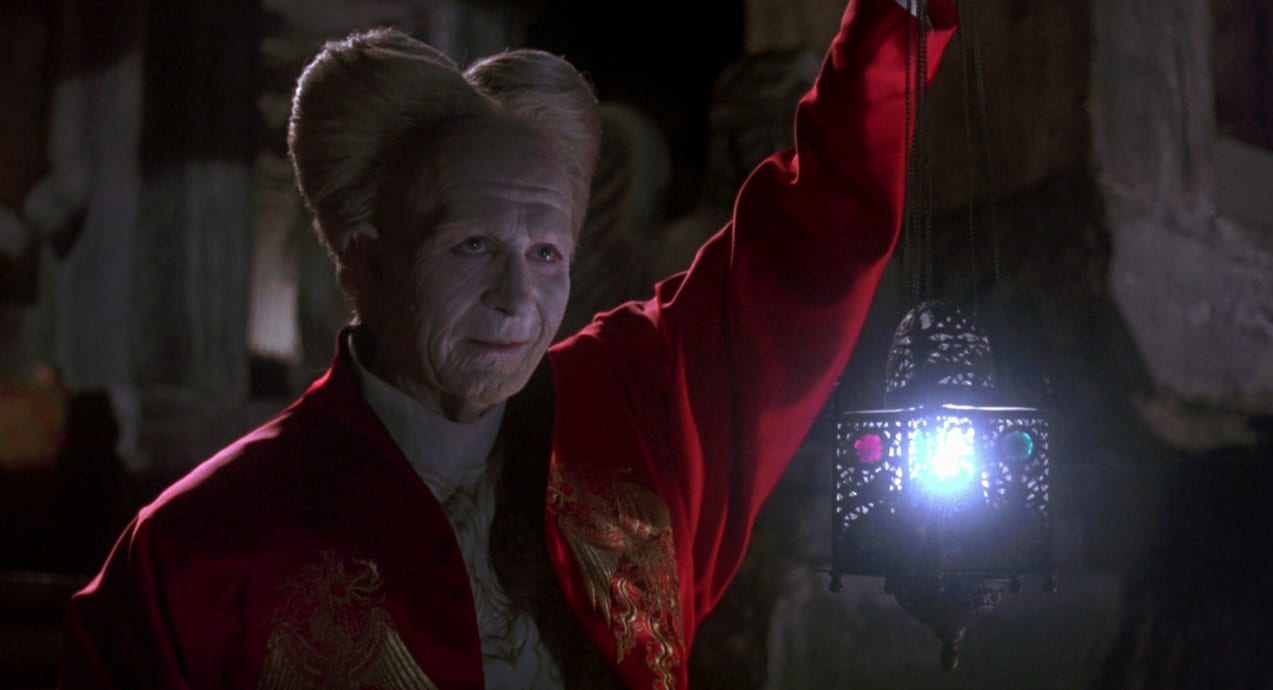
Few film roles are as iconic as Count Dracula, and few actors give the role as much depth and dignity as Oldman does in Francis Ford Coppola’s 1992 film “Bram Stoker’s Dracula.” A role as recognizable as Dracula demands a careful balance between adherence to tradition and fresh perspective, and Oldman’s performance not only accomplishes this as the subdued, aged Count, but also as a young, dapper version of himself and the multiple demonic manifestations that follow. Oldman manages to retain the essence of the character through each of his transformations, from old to young to beast to yet another beast, while at the same time expressing the distinct traits of each representational form. This not only requires differences in voice, body language and demeanor, but makes for highly demanding shifts between scenes.
Avoiding the possible flattening effect of common villainous archetypes, Oldman manages to create a Dracula who is nearly as pitiable as he is bloodthirsty. He is conflicted, heartbroken, motivated by love (albeit his own twisted version of it) and despite being an undead and unholy creature of the night, he retains at least some semblance of humanity. Holding onto human instincts or emotions is not, of course, the same thing as being sane, and though his emotions may be genuine, they are almost always confused by the less human drives within him. Oldman’s expressiveness proves a perfect match for this level of internal conflict, presenting an amalgamation of flaws and desires that are further corrupted by his many years of artificial life.
Dracula, like many classic monster archetypes, is a cross between man and beast, a duality that defines both his character and his conflict. He is a man who turned away from God to serve only himself, and as a result, lives out his perpetual future obsessing on the losses of his past. It is a story about power and the loneliness it brings, and Gary Oldman’s characteristic gestures—the slow nods, sardonic grins and hissing slur of a voice—as well as the powerful subtly of his expressions, become assets that carry the film beyond the confines of a classic tale to something more luminous and introspective, an accomplishment that adds a touch of modern appeal to this old and illustrious face of horror.
3. True Romance (1993)
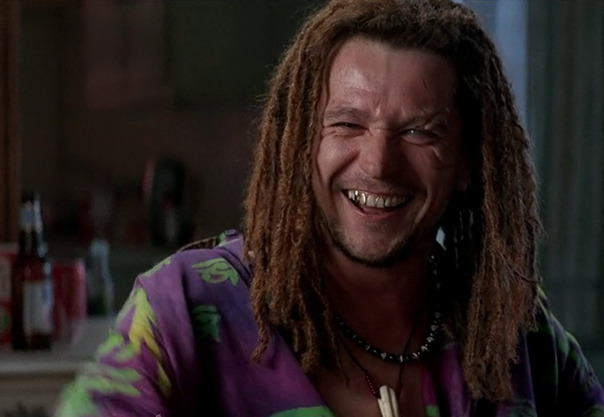
Tony Scott’s film “True Romance,” written by Quentin Tarantino, is considered one of the most influential films of the 1990s, and though it has a star-studded cast, Gary Oldman’s character, the white pimp Drexl who emulates the stereotypical image of an African American gangster, is arguably the most popular villain among its host of popular villains.
An awkward character, Drexl, like the vampire Dracula, comes off as intentionally obscure, a trait that makes the character more mysterious but also more credible. Drexl enters the film as an enigma, a puzzle for protagonist Clarence (Christian Slater) to solve and conquer. And in a short amount of screen time the character becomes an eminent presence, with even his more campy and humorous expressions serving to intimidate as he exudes a sense of falseness and deception, as well as an eagerness to live up to the violent stereotype he emulates. These nuances, expressed through a combination of humor and dramatic posturing, seem to come natural to Oldman, whereas another actor given the part may have a difficult time balancing the character’s malevolent nature with his potentially cartoonish pretense.
This sense of balance is precisely why Gary Oldman is able to play so many antagonists without being typecast as one. While he does have a penchant for theatricality, likely due to stage training which incorporates projection methods to fully express a character’s voice and behavior to an audience, he is also a master of subtlety. And Drexl Spivey is a brief but distinguishing example of this, at times loud and stagy but a moment later, restrained.
Oldman’s style is still theatrical during his quieter moments, but in a naturalistic manner, making his character feel the moment as a true experience, however spectacular the plot, setting or circumstances. “True Romance” is a landmark film for ‘90s cinema, and particularly for those late-century crime films that introduced a new brand of antagonist, one that demands a versatile actor like Gary Oldman to flesh out the complexities of a self-involved, possibly incomprehensible adversary.
4. Léon: the Professional (1994)
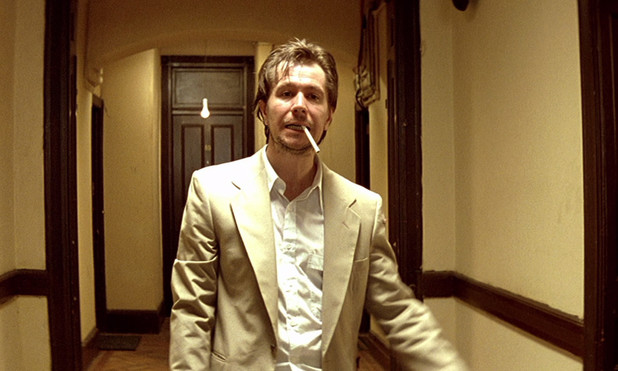
Almost immediately after filming “True Romance,” Gary Oldman portrays yet another modern classic villain in Luc Besson’s crime drama “Léon: the Professional,” this time playing a crooked DEA agent who is arguably more violently sociopathic than any character he had played beforehand (or likely any he would play thereafter). “Léon: the Professional” (shortened to “The Professional” in the U.S.) involves a mob hitman (Jean Reno) who uses his skills to protect a local child (Natalie Portman) from the crooked agent Stansfield, who kills her entire family over her father’s alleged theft.
As the story develops, Stansfield’s ruthlessness only escalates as he pursues the surviving child and her new hitman guardian with obsessive mania, taking profuse amounts of drugs and torturing a mob boss for informations about their whereabouts. Stansfield, like Drexl in “True Romance,” appears content and almost blissful when doing violence, like that of a connoisseur over a piece of work, adrift in his thoughts until something goes wrong and he slips into hysterics. Again, the villain is fickle and unpredictable, and as a result, that much more frightening.
As Agent Stansfield, Oldman shows both calm and manic moments, but he also exhibits a range of behaviors that are not often employed by actors playing movie villains. His performance is full of odd tics and seemingly compulsive rituals surrounding his drug use and acts of violence. He closes his eyes as he listens to music and his face twitches as if in ecstasy as he prepares himself for cruelty. And yet, every act of sadistic glee is matched with a convincing moment of calm and personable demeanor. And in the end, as he spots his enemy escaping from the scene of a showdown, he walks quietly behind him and takes his time to slowly aim at the man’s back and pull the trigger. Like a dance between cold indifference and emotional extremes, Oldman’s Stansfield is a carefully crafted portrait of corruption in every sense of the word, and as an unpredictable authority figure, he is an ideal nemesis for the antihero protagonists he contests.
5. The Fifth Element (1997)
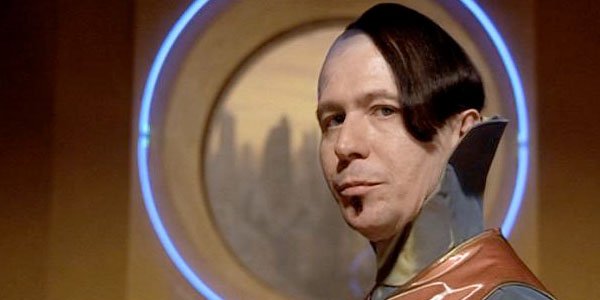
“The Fifth Element,” directed by Luc Besson three years after casting Oldman as Agent Stansfield in “Léon: the Professional,” pushes the actor beyond the crime genre to the infinite space of science fiction and fantasy. As head of an intergalactic corporation who secretly serves a ball of energy known as “the Great Evil” (aka “Mr. Shadow”). Zorg is like a cross between a robber baron and a mad scientist, though more terrifying than either. He speaks quickly but with an unusual lisp, exhibits a number of odd gestures and sports a haircut that looks like the straight bangs of a stereotypical nerd on one side and a bullie’s buzz cut on the other. And like other popular villains Oldman has played (see above), he is casually violent and ultimately unpredictable.
At this point in Oldman’s career, he seems to be having a little more fun with his villain roles, adding a little more flair to their quirks and using his vocal skills to produce something altogether mad but still wholly believable. Zorg chews on his odd scenery the moment he walks onto the set, and even as he speaks through a lisp about absurd philosophies and praises the destructive forces of the universe, he is as comfortable as a door-to-door insurance salesman attempting to win over his audience with an oratorical grandeur.
Similar to the graphic novels that inspired its early conceptual work in Besson’s adolescence, “The Fifth Element” is a film with comical overtones and dramatic intensity, the kind of picture and setting that seem tailor-made for Gary Oldman’s characteristic exuberance. In Zorg, Oldman was allowed to indulge himself, and given the film’s popularity and cult-like following, that indulgence has paid off for both the filmmakers and their fans.